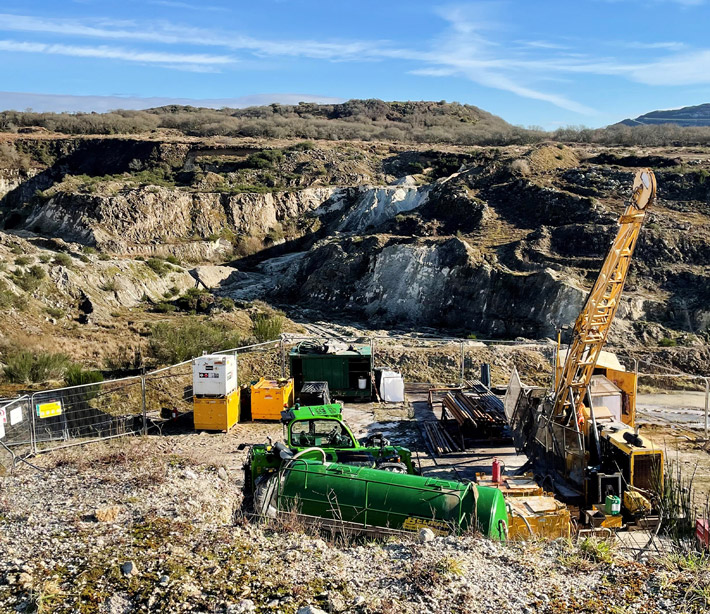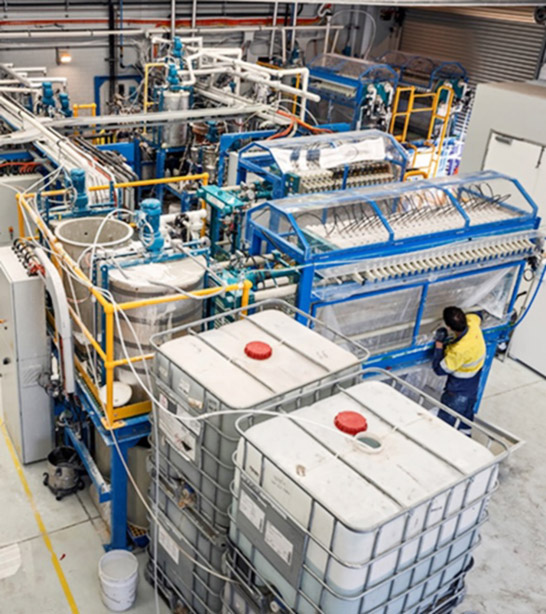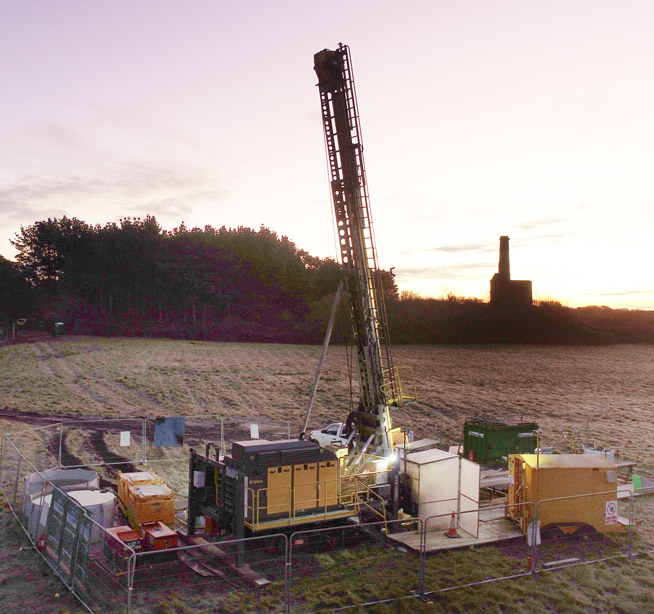September 2021 Issue Index
The green industrial revolution
The transition to renewable energy will see demand for lithium rise dramatically. New technologies can extract resources in an environmentally responsible manner.
The mining industry has an important part to play in the transition to renewable energy. To meet the demand for low carbon technologies such as wind turbines and batteries for electric vehicles, production of the raw materials must increase dramatically. Lithium is one mineral in high demand.
The World Bank has forecast a 965% increase in lithium demand from 2017 production levels by 2050.
Most of the world’s lithium is either produced in South America by solar evaporation from salt deposits or Western Australia from open pit mining of hard rock deposits.
Lithium in Cornwall
Cornish Lithium is a company focused on the environmentally responsible extraction of lithium, exploring in lithium-enriched geothermal waters and granites in the southwest of England, aiming to extract mineral resources in an environmentally responsible way.
The region is underlain by a massive lithium-rich granite, formed about 290 to 270 million years ago. Certain pockets in the 60,000km3 of granite are more lithium-enriched. The granite has a higher heat flow than any other parts of the UK, with potential for geothermal energy.

Cornwall is cut by many geological faults and mineralisation is associated with the granite intrusions. The county has historically been a major producer of copper and tin, with more than 3000 named mines. Stock prices collapsed before the minerals ran out, and the last tin mine closed in 1998. However, there is still potential for tin, copper, tungsten and other technology metals.
Engine houses are dotted around the landscape because the miners needed to pump water out to artificially lower the water table so they could mine deeper. Much of this water was called ‘hot springs’ – upwelling warm waters that travelled into the mine through permeable geological faults. These geothermal waters were sampled as far back as 1864 and found to be enriched in lithium.
Today, Cornish Lithium is focused on exploring for lithium and other battery metals in the region.
The company is looking at four main settings and the potential for production from shallow geothermal water (1-2km depth). Although the geothermal water is much hotter at 5km, this is very expensive to drill, requiring a more powerful drilling rig used by oil and gas companies.
Affordable and clean energy is a really key goal, requiring industry, innovation and climate action alongside responsible consumption and production.
Mining undertaken responsibly can contribute positively to sustainable development goals.
Cornwall has an amazing mining history and a wealth of subsurface information from old mine plans and sections. Some are 200 years old and hand painted on vellum, and cannot be scanned.
Cornish Lithium employs two full-time digital archivists to capture 2D information, which is brought into GIS software. Then 3D modelling software transposes the images into a virtual 3D space, allowing all the information to be traced.
This historical data can be amalgamated with satellite imagery and remote sensing data from aerial and drone surveys, which show these large geological structures, and can be traced through the cliffs and out to sea.
A 3D digital model of the subsurface can therefore be built without needing extensive drilling, which allows Cornish Lithium to target specific geological structures with confidence.
Hard rock project
China clay has also been mined for 250 years in central Cornwall. The reduction in demand for china clay in recent years has left a lot of infrastructure for potential reuse.
Cornish Lithium has completed its second drilling campaign, focused on a disused china clay pit at Trelavour Downs, adjacent to the site of a lithium mine active during World War II, which can be repurposed to produce lithium, fitting into the circular economy.
The company hopes to have a JORC compliant resource in the autumn, with testing on how to extract lithium and associated by-products from the mica minerals.

Cornish Lithium will use a new extraction technology developed by Australian company Lepidico.
Currently, most of the world’s production of lithium from hard rock sources involves roasting to extremely high temperatures to crack the mineral structure and leach lithium out. The innovative new process extracts lithium from the mica minerals without any roasting. This has a much lower carbon impact and is more environmentally responsible.
Geothermal waters
United Downs is the company’s flagship test site for lithium-enriched geothermal waters.
To date Cornish Lithium has drilled two experimental boreholes to depths of approximately 1000m in the area where lithium was first discovered in 1864 in these upwelling warm waters.
The United Downs Geothermal Test Site has proven that it is feasible to pump these circulating warm waters within the permeable geological structures and extract lithium from them.

The waters at the design project are less salty than sea water, but contain significantly lower levels of deleterious elements than the South American deposits.
Cornish Lithium will extract the lithium from the water, while also seeking to commercialise the geothermal energy.
The process could ultimately be a low carbon or even net zero carbon way of producing lithium.
Recent progress has been made in new technologies that can extract lithium directly from waters – a suite of ‘direct lithium extraction’ technologies.
Highly selective membranes or ion absorption beads can be used to selectively remove just the lithium compounds from the water. These are concentrated into lithium chloride, which can be further processed to generate a battery grade lithium hydroxide.
Cornish Lithium is excited about the potential for its pilot lithium extraction plant, which is currently being built with government funding.
‘Water is pumped from a borehole to the surface and heat energy is extracted. A pass into the lithium pilot plant extracts the lithium compounds and then you can re-inject it back to depth where it will heat up and hopefully recharge the lithium again,’ said Crane.
‘It’s crucial to decarbonise and combat climate change. Energy transition will be mineral intensive, and the mining industry has a huge task ahead. We must embrace new technologies to help explore for lithium and other battery metals, and do it responsibly. That’s why 3D digital modelling is so important, to get as much data as possible from all the information available,’ concluded Crane.
New extraction technologies can also help unlock mineral deposits that have previously been thought unconventional, or to help deal with falling head grades in copper and tin mines around the world. All geoscientists have a responsibility to play a key role in this energy transition.
Thanks to
Lucy Crane
Senior Geologist, Cornish Lithium
Edited excerpt from Maptek Connect presentation, May 2021
- New extraction technologies can help unlock mineral deposits that have previously been thought unconventional or uneconomic
- A 3D digital model of the subsurface allows Cornish Lithium to target specific structures in areas known for geothermal waters without extensive drilling
- Repurposing an old china clay pit to produce lithium is another low carbon footprint mining approach that the company is deploying

